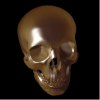Hello.
Could anyone please help me with this:
I'm playing around with a proxy d3d9.dll to make games run on my slow system. If I've understood correctly, a lot of the heavy and costly things done in a game (such as postprocessing effect, fogs, etc. etc.) happen in the shader part. What I'm struggling with is to intercept the game's call to SetVertexShader and SetPixelShader and instead tell directx to simply use the fixed pipeline instead of custom shaders, hoping that would make the game run smoother (I don't care about the loss of all the fancy eye candy shader effects!). The interception is easy, but I have no idea how to pass the fixed pipeline as a shader to the original d3d9.dll. I've done a lot of digging about shaders and stuff, but I'm still totally confused.
Can anyone point me in the right direction please?
Thank you so much in advance.







